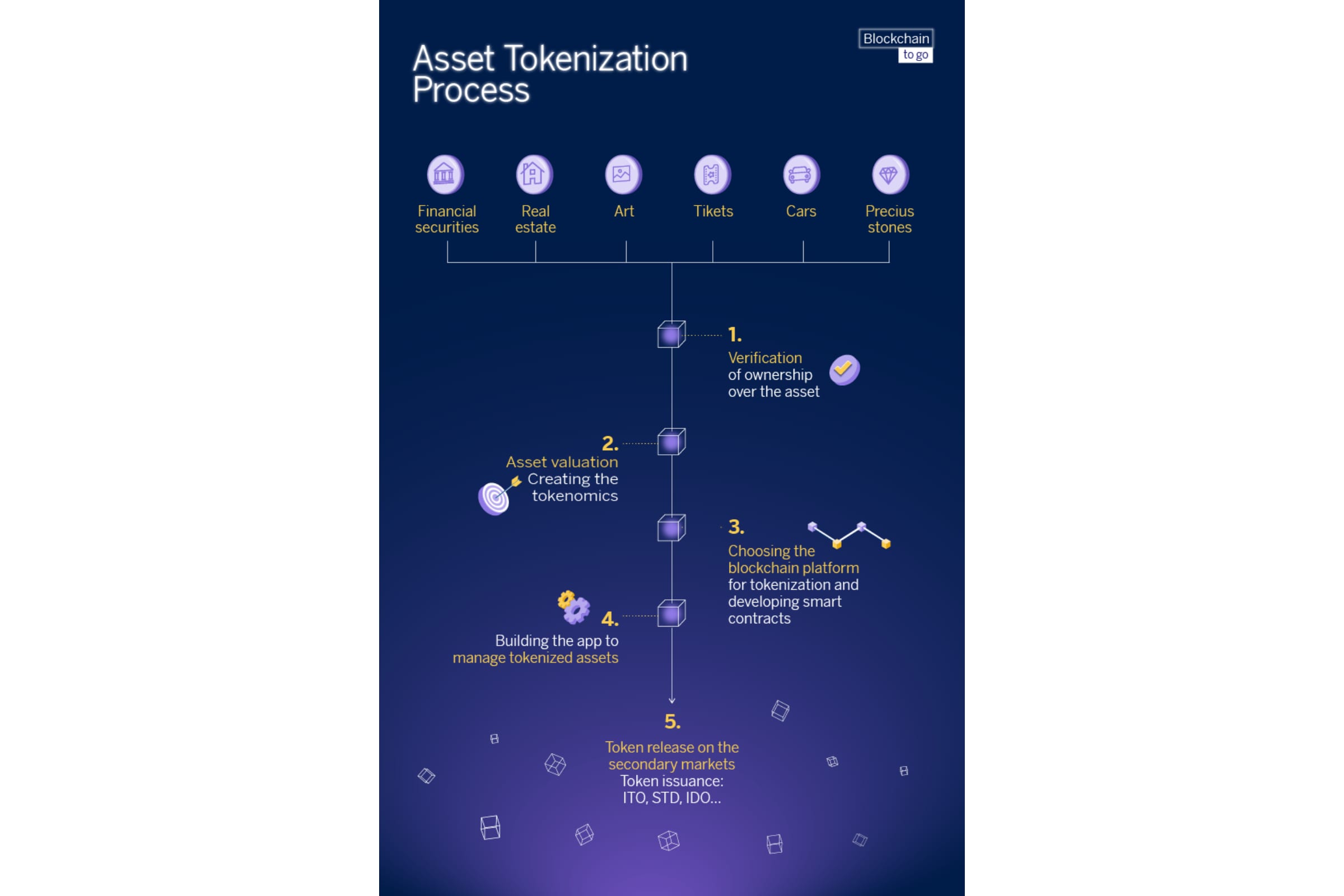Tokenizing involves representing and transforming a physical, financial or intellectual asset into a digital file. We look at one of the most promising uses of blockchain technology, such as its role in raising funds for projects in the real economy or issuing bonds and shares.
What exactly is a token?
The fact is tokens are nothing new. Humankind has always resorted to some type of value unit to do business and for trading purposes. Since the rise of blockchain technology and the crypto ecosystem, digital tokens have become increasingly important.
In essence, a digital token is a code the content of which grants someone a particular right. This may refer to the ownership of an asset, access to a good or service and making or receiving a payment. Indeed, its characteristic exchangeability enables it to work somewhat like money, representing as it does any negotiable asset.
Tokenization is the transformation and representation of a real asset or object in a digital file inserted in a block of the blockchain. Once recorded, the token can be traded or stored. Hypothetically, tokenization can refer to absolutely anything: real property, a work of art or a financial asset. This extreme versatility means that the tokenisation sector is on the rise.
Let’s have a look at asset tokenization
Asset tokenization is a process through which a physical or financial asset is transformed into a token, in other words, into a digital representation of its value. The representation of the ownership rights of an asset is obtained by creating a smart contract that establishes the rules for managing and distributing the tokens.
These tokens, thanks to blockchain technology, represent assets and elements that are, by definition, unique, irreplaceable and non-interchangeable, and can be freely and securely stored and marketed. Asset tokenization is based on Distributed Ledger Technology (DLT)., the protocol behind a non-centralized database administered by several participants. Since it is decentralized, there is no central supervising authority involved.
The best of both worlds
Payments in the future
Some of the benefits of asset tokenization include more efficiency in costs, profitability, speed and transparency. Along with the more inclusive participation of market investors, which generates greater liquidity. Indeed, tokenization is a method of dividing an asset that enables more people to hold a stake in it, which otherwise would have been sold whole and at a higher price.
Tokenized assets can be:
- Native: for example, cryptocurrencies like Bitcoin, because they were created within blockchain technology. Initial Coin Offers (ICOs), initiatives aimed at financing a blockchain-based project in its development phase, also generate native tokens.
- Off-the-chain: these are tokens for securities (like shares and bonds), commodities (like gold) and other physical or intellectual assets (like property, works of art or patents), the value of which is backed by a physical asset.
Fiat (fiduciary) money issued by central banks (dollar, euro, pound, yuan, etc.) can also be tokenized. In this case, we are talking about a fiat-pegged token, i.e., the digital representation of a fiat currency, whose value is pegged to that of the traditional currency.

This is also one of the possible cases of stablecoins, digital currencies whose value is linked to another method of exchange that is deemed stable. There are around a hundred of these, which are classified into three types: those backed by fiat currencies (but they may also be backed by gold, oil or even property), by other cryptocurrencies and non-backed ones (algorithmic stablecoins).
- In the case of stablecoins backed by fiat currency (for example, the dollar), the issuer must offer reserves in dollars of the same value as a guarantee (USD Coin, Tether, TrustToken or Gemini Dollar)
- Stablecoins backed by other cryptocurrencies are very volatile, and a relatively high number of reserve cryptocoins may be required to issue even a small number of tokens (MakerDAO, Synthetik, Reserve)
- The stability of algorithmic stablecoins stems from a consensus mechanism to determine whether the supply of tokens should be increased or decreased as necessary, similarly to how a central bank works (Terra, FRAX, Fei USD)
As for NFTs, these are digital contents that represent objects in the real world, such as works of art, music, games and collections of any kind. Popularly referred to by their acronym, these non-fungible tokens indicate something that cannot be replaced. For instance, a cryptocurrency can be changed for another asset, whereas a work of art is unique and, as such, non-fungible. An NFT is purchased using the blockchain to which the smart contract is linked, and which provides proof of the purchase transaction.

